

Explore Italy by place | region | time period
The Paleolithic Age » Castro (Lecce, Apulia)
During the period of their greatest expansion, the glaciers covered more than half of Europe up to the Alps making it uninhabited. For about two million years, glacial periods alternated with different climates, and interglacial periods with even warmer climates than our present. Humans and animals were present in Europe in the areas discovered by glaciers, and it seems that in certain periods the climate was also quite mild.
The Salento peninsula in southern Apulia is composed of limestone and shows karst phenomena. Karst is an area of land made up of limestone: it is chalk or calcium carbonate, a soft rock that dissolves in water. As rainwater seeps into the rock, it slowly erodes. Where erosion has worn away the land above ground, steep rocky cliffs are visible.
Salento coastal Karst formations include several caves which were periodically inhabited in the Middle and Upper Paleolithic periods. Flake tools, bones, stone engravings and figurines have been found in them. They constitute a notable local cultural continuity of Paleolithic and Neolithic human occupation, so, the Ministry of Cultural Heritage and Activities of Apulia formally submitted for the induction into the World Heritage List in 2006 and has received UNESCO's official notice and recognition as Karstic caves in prehistoric Apulia.
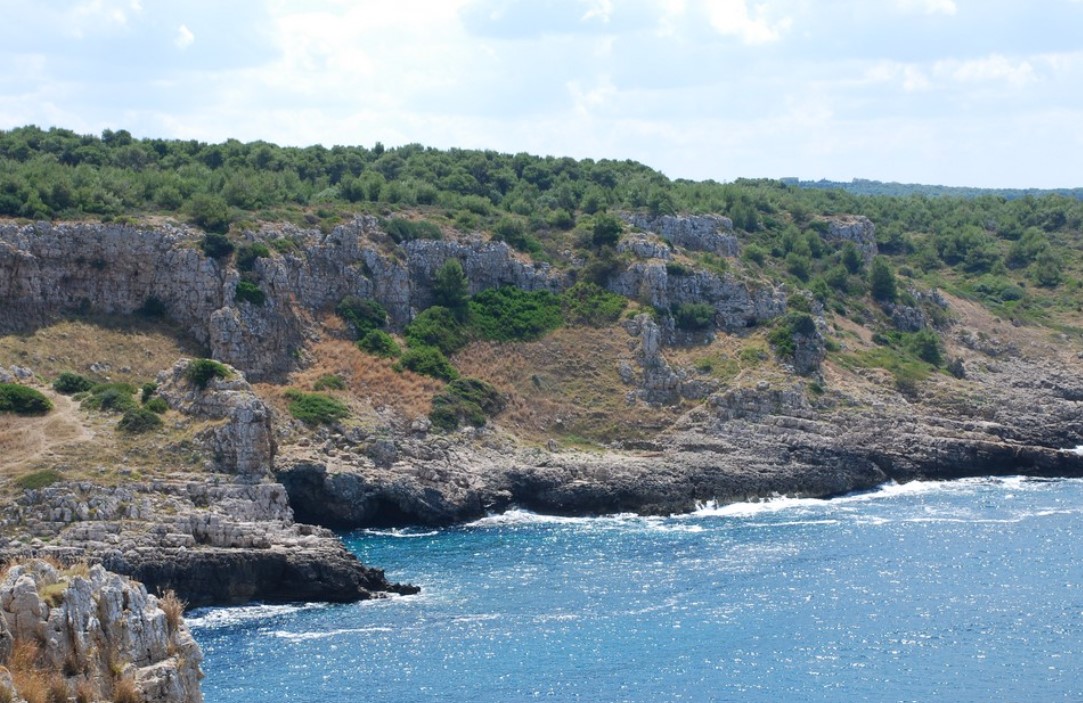
The Romanelli is one of those caves. It is in a wonderful inlet on the Salento coast at Castro (Lecce) about 7 meters above sea level. In the past this cavity was used as a shelter or dwelling for animals and men of the glacial and interglacial periods.
European fauna was typically African during the interglacial periods of the last 500,000 years: fossils of hippos (Hippopotamus amphibius) who lived next to the extinct elephants Elephas antiquus and Rhinoceros mercki were found in the cave. During the glacial periods, the fauna was of the cold climate type. About 15,000 years ago, numerous Arctic animal species migrated south to survive glaciations, then returned to the Arctic about 500 years later. Appears the great auk along the coasts of southern Europe, also its remains were found in the Romanelli cave.
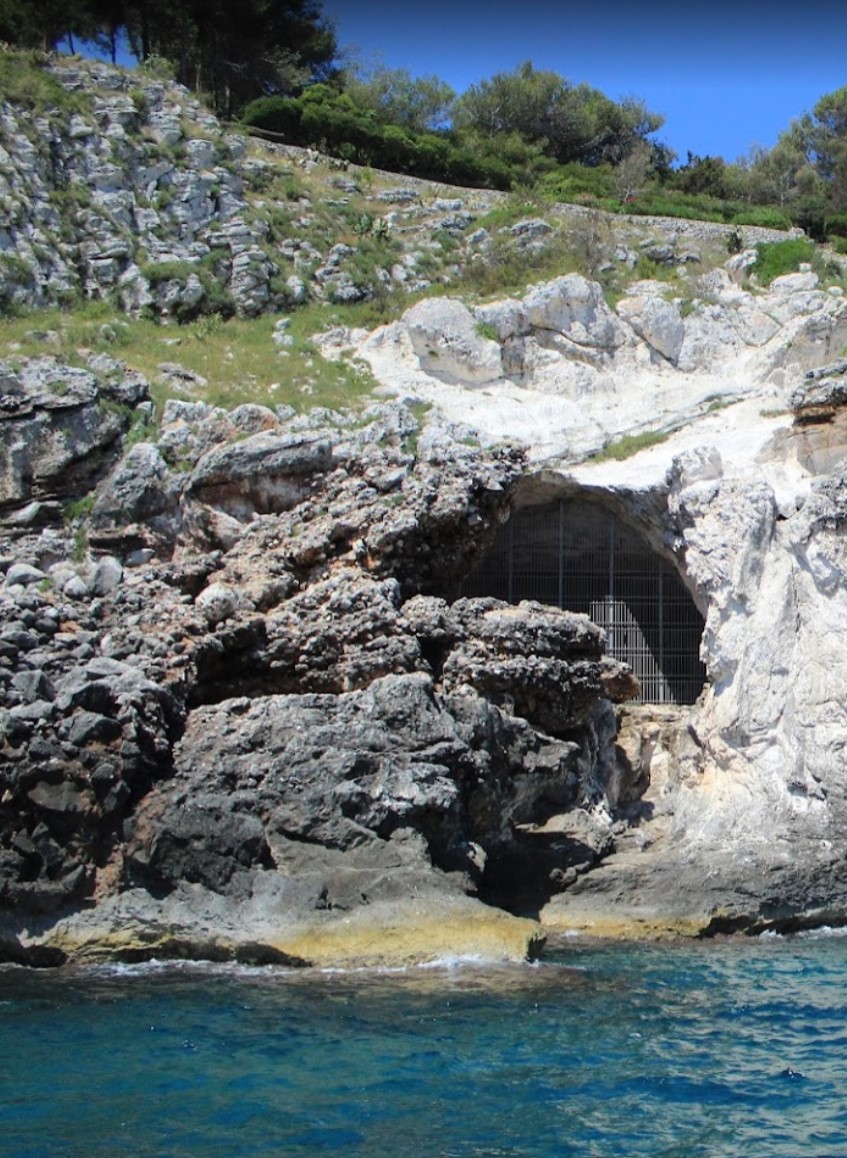
The great auk or Penguinus impennis (from the Latin pinguis, fat) was a bird belonging to the family of the Alcides. It was similar to penguins in appearance and habits but was not related to them: it was tall up to 80 cm, it had short wings compared to the massive body that did not allow it to support its weight of about 5 kg and therefore could not fly; it lived in the sea evolving into a perfect swimmer, and nested on islands where lay only one egg.
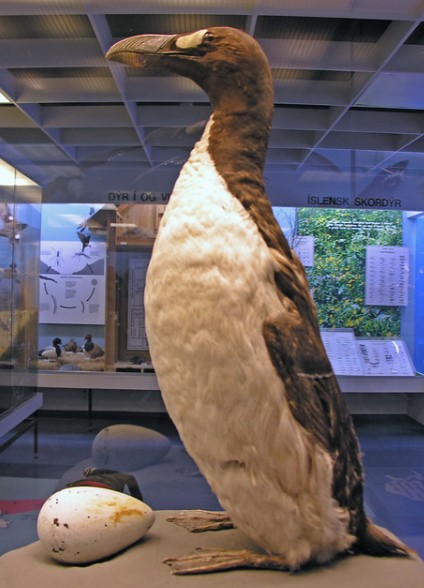
It lived in the cold waters of the coasts of the North Atlantic Ocean and was led to extinction by man starting from the late eighteenth century. It was intensely hunted for his feathers used to manufacture cushions, for his flesh, his eggs, and his fat used as oil for combustion. After years of exploitation, the last known great auk (endling) was killed for collectors of specimens in 1844 by a group of fishermen on Eldey Island off Iceland. They killed the last surviving pair of great auks and the egg they were hatching. When the last endling dies, the species will no longer exist.
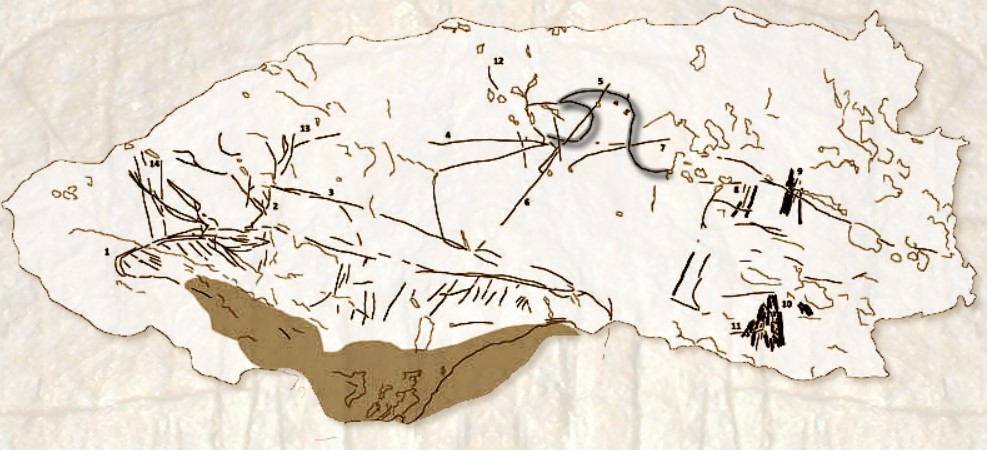
The Romanelli cave is not currently accessible. It consists of a single room, wide open to the sea, with the vault partially collapsed at an unknown time. The origins of the prehistoric site are much older than researchers have thought so far and would confirm the presence of humans in Italy long before the appearance of Homo sapiens (Capo Rossello).
Inside there were found many testimonies of the presence of animals and men in the cave from 350,000 years ago:
- a large amount of fossil remains (elephants, hippos, rhinos, cattle, deer, felines, wild boars, hyenas, wolves, ...) that document climate change over time;
- numerous bone and lithic artifacts (scrapers, burins, blades, ...);
- hundreds of artefacts of portable art find including a stone painted in ochre that is considered the oldest painting discovered in Italy;
- artistic representations engraved on the vault of the cave of great interest with geometric and zoomorphic compositions such as the figure of a bovid and a rare representation of great auk. They show several phases of art-making activity through the superimposition of figures and motifs and in the use of at least four different engraving techniques. The latter indicates the skill of the artists in selecting tools appropriate for rock surfaces of different hardness;
- groups of linear signs and finger grooves;
- remains of 2 skeletons of children and some mandibles.
In 1869, the first fossils were discovered that immediately suggested the presence of prehistoric man in the area since remote times. In 1874 the cave was identified, but the excavations inside were undertaken only in the early twentieth century. Systematic research continued for decades and up to the 1970s. Since 2015 the field activities have started again and they intend to explore also the innermost part of the cave, never studied so far.
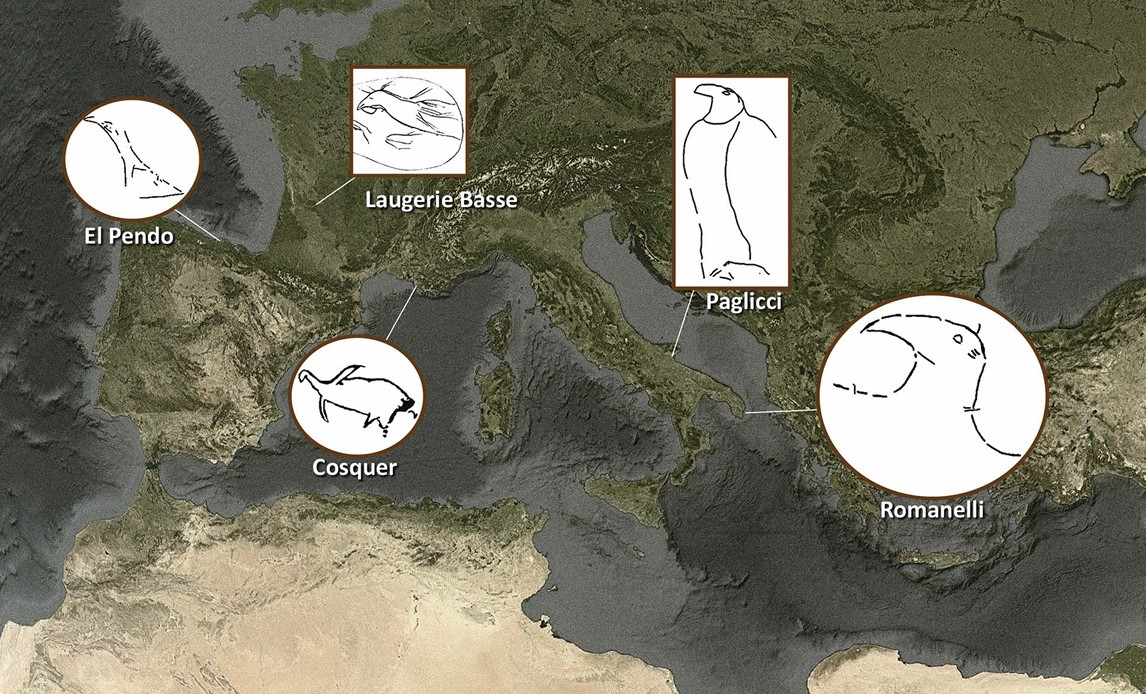
In order to know more, you can visit:
- Wikipedia: [1, 2]
This page was last edited on 7 June 2024
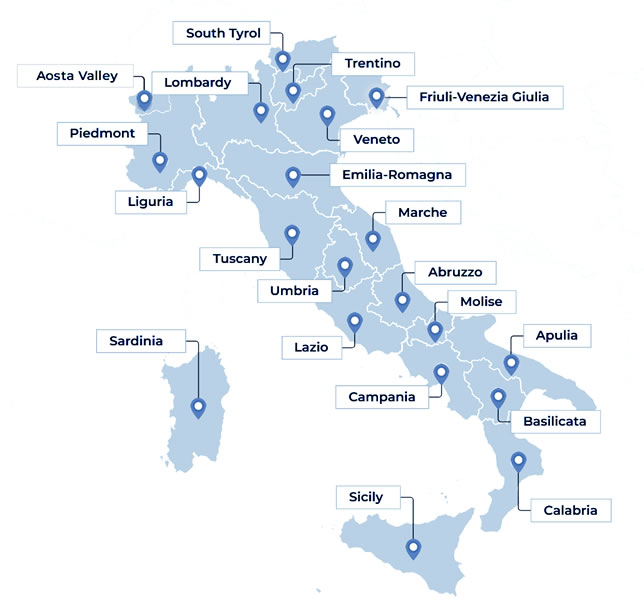
Open in Google Maps and find out what to visit in a place.
Go to: Abruzzo | Aosta Valley | Apulia | Basilicata | Calabria | Campania | Emilia Romagna | Friuli Venezia Giulia | Lazio | Liguria | Lombardy | Marche | Molise | Piedmont | Sardinia | Sicily | South Tyrol | Trentino | Tuscany | Umbria | Veneto

Text and images are available under the Creative Commons Attribution-ShareAlike License 4.0; - italystudynotes.eu - Privacy